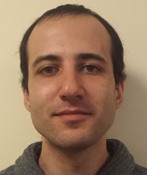Program Information
BEST IN PHYSICS (JOINT IMAGING-THERAPY): An MRI Compatible Externally and Internally Deformable Lung Motion Phantom for Multi-Modality IGRT
P Sabouri1*, T Arai2 , A Sawant1 , (1) University of Texas Southwestern Medical Center, Dallas, TX, (2) University of Maryland School of Medicine, Baltimore, MD
Presentations
TU-AB-BRA-6 (Tuesday, August 2, 2016) 7:30 AM - 9:30 AM Room: Ballroom A
Purpose:
MRI has become an attractive tool for tumor motion management. Current MR-compatible phantoms are only capable of reproducing translational motion. This study describes the construction and validation of a more realistic, MRI-compatible lung phantom that is deformable internally as well as externally. We demonstrate a radiotherapy application of this phantom by validating the geometric accuracy of the open-source deformable image registration software NiftyReg (UCL, UK).
Methods:
The outer shell of a commercially-available dynamic breathing torso phantom was filled with natural latex foam with eleven water tubes. A rigid foam cut-out served as the diaphragm. A high-precision programmable, in-house, MRI-compatible motion platform was used to drive the diaphragm. The phantom was imaged on a 3T scanner (Philips, Ingenia). Twenty seven tumor traces previously recorded from lung cancer patients were programmed into the phantom and 2D+t image sequences were acquired using a sparse-sampling sequence k-t BLAST (accn=3, resolution=0.66x0.66x5mm3; acquisition-time=110ms/slice). The geometric fidelity of the MRI-derived trajectories was validated against those obtained via fluoroscopy using the on board kV imager on a Truebeam linac. NiftyReg was used to perform frame by frame deformable image registration. The location of each marker predicted by using NiftyReg was compared with the values calculated by intensity-based segmentation on each frame.
Results:
In all cases, MR trajectories were within 1 mm of corresponding fluoroscopy trajectories. RMSE between centroid positions obtained from segmentation with those obtained by NiftyReg varies from 0.1 to 0.21 mm in the SI direction and 0.08 to 0.13 mm in the LR direction showing the high accuracy of deformable registration.
Conclusion:
We have successfully designed and demonstrated a phantom that can accurately reproduce deformable motion under a variety of imaging modalities including MRI, CT and x-ray fluodoscopy, making it an invaluable research tool for validating novel motion management strategies.
Funding Support, Disclosures, and Conflict of Interest: This work was partially supported through research funding from National Institutes of Health (R01CA169102).
Contact Email:

